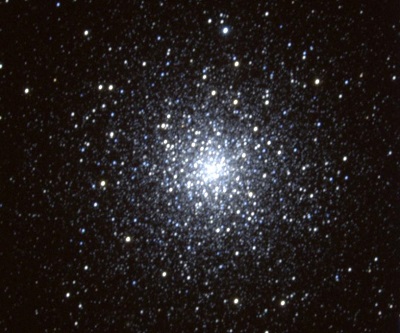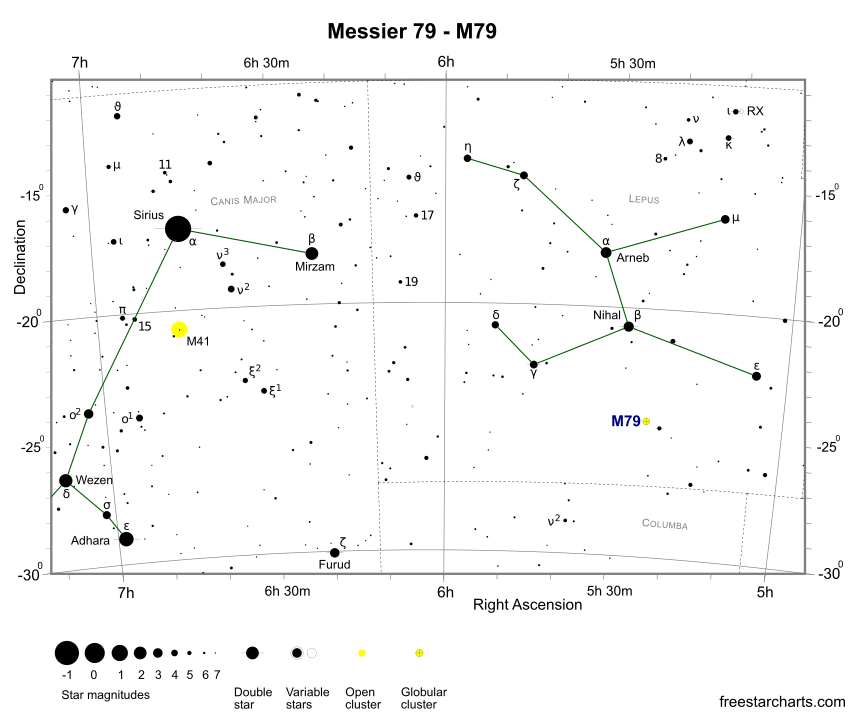M79 is an intriguing eighth magnitude globular cluster located in the constellation of Lepus. At a distance of 41,000 light-years from Earth and 60,000 light-years from the Milky Way centre, it's believed to be an extragalactic globular and a native of the nearby Canis Major Dwarf galaxy. The only other extragalactic globular cluster in the Messier catalogue is M54, which belongs to the Sagittarius Dwarf Elliptical galaxy.
Unusual for globulars, M79 is located opposite the galactic center and therefore best seen during the months of December, January and February. With a declination of -24.5 degrees, it never rises particular high from mid-latitude northern temperate locations. However, it's one of the finest globulars that can be seen during that time of year.
The constellation of Lepus is located south of Orion and west of Canis Major. It contains few deep sky objects within amateur range and M79 is the only Messier object found within its boundaries. Locating M79 is easy, it's positioned 20 degrees southwest of Sirius, the brightest star in the night sky. An imaginary line connecting Arneb (α Lep - mag. +2.6) with Nihal (β Lep - mag. +2.8) and then extending southwards for about the same distance again leads to M79. About 0.5 degrees southwest of M79, lies magnitude +5.1 double star HD 35162 (HIP 25045). It has a 7th magnitude companion, separated by 3 arc minutes.


Finder Chart for M79 - pdf format (credit:- freestarcharts)
At magnitude +8.1, M79 is visible as a fuzzy spot through 7x50 or 10x50 binoculars. A small 80mm (3.1-inch) refractor reveals a somewhat yellow looking, unresolved hazy comet-like ball of light. It has a bright core and therefore stands up well - to a certain degree - to light polluted skies. Larger scopes, of minimum 250mm (10-inch) aperture are required to begin resolution of the outer edges.
In total M79, spans 8.7 arc minutes in diameter, which corresponds to a spatial diameter of 104 light-years. It contains 150,000 stars and is estimated to be 11.7 billion years old.
M79 Data Table
| Messier | 79 |
|---|---|
| NGC | 1904 |
| Object Type | Globular cluster |
| Constellation | Lepus |
| Distance (light-years) | 41,000 |
| Apparent Mag. | +8.1 |
| RA (J2000) | 05h 24m 11s |
| DEC (J2000) | -24d 31m 27s |
| Apparent Size (arc mins) | 8.7 x 8.7 |
| Radius (light-years) | 52 |
| Age (years) | 11.7 Billion |
| Number of Stars | 150,000 |
| Notable Feature | Likely belongs to the Canis Major Dwarf Galaxy |